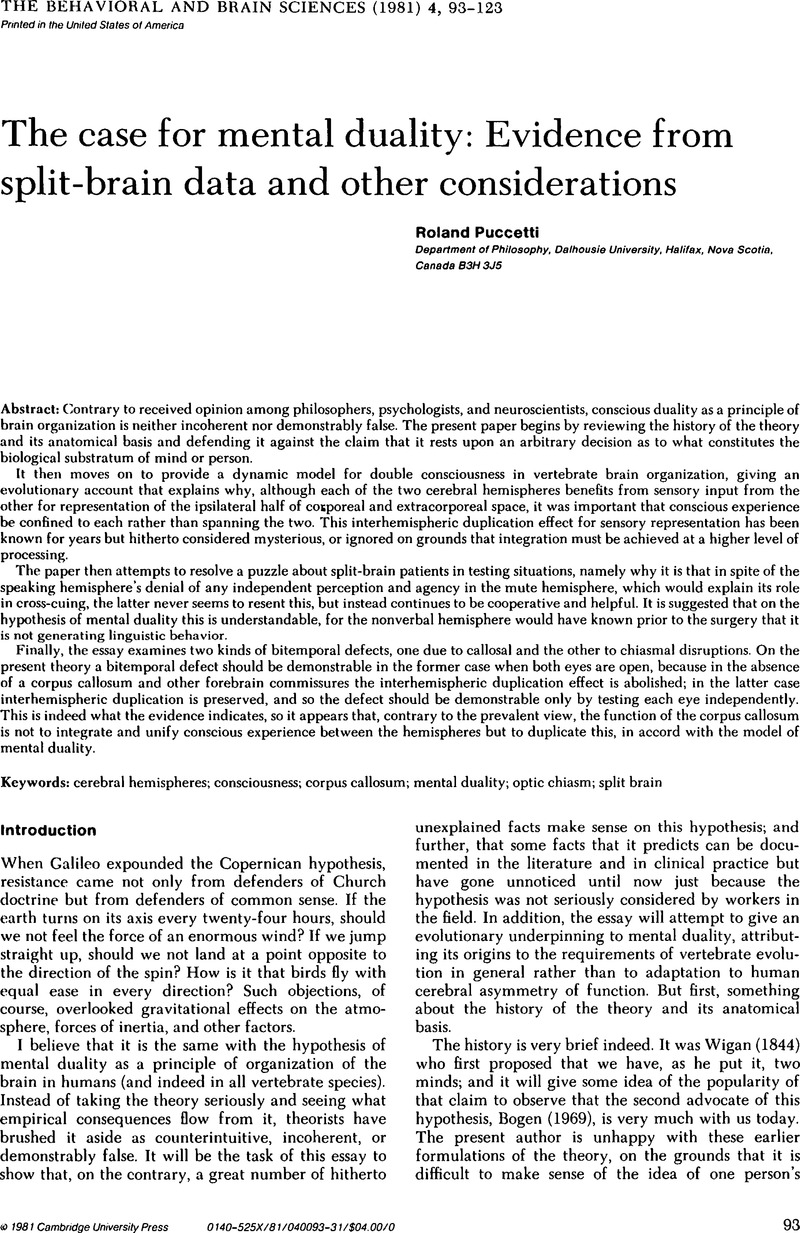Crossref Citations
This article has been cited by the following publications. This list is generated based on data provided by Crossref.
1983.
Human Laterality.
p.
203.
Gruzelier, J.
1985.
Nineteenth-century views on madness and hypnosis: A 1985 perspective.
Behavioral and Brain Sciences,
Vol. 8,
Issue. 4,
p.
638.
Puccetti, Roland
1985.
Experiencing two selves: The history of a mistake.
Behavioral and Brain Sciences,
Vol. 8,
Issue. 4,
p.
646.
Eling, Paul
1985.
Laterality as a means and laterality as an end.
Behavioral and Brain Sciences,
Vol. 8,
Issue. 4,
p.
637.
Harrington, Anne
1985.
Historical and scientific issues en route from Wigan to Sperry.
Behavioral and Brain Sciences,
Vol. 8,
Issue. 4,
p.
648.
Harrington, Anne
1985.
Nineteenth-century ideas on hemisphere differences and “duality of mind”.
Behavioral and Brain Sciences,
Vol. 8,
Issue. 4,
p.
617.
Mittwoch, Ursula
1985.
Lateralization and sex.
Behavioral and Brain Sciences,
Vol. 8,
Issue. 4,
p.
644.
Murray, David J.
1985.
What textbooks between 1887 and 1911 said about hemisphere differences.
Behavioral and Brain Sciences,
Vol. 8,
Issue. 4,
p.
644.
Leary, David E.
1985.
Scientific amnesia.
Behavioral and Brain Sciences,
Vol. 8,
Issue. 4,
p.
641.
Oppenheimer, Jane M.
1985.
Continuity of thought on duality of brain and mind?.
Behavioral and Brain Sciences,
Vol. 8,
Issue. 4,
p.
645.
Milner, A. David
1985.
Two hemispheres do not make a dichotomy.
Behavioral and Brain Sciences,
Vol. 8,
Issue. 4,
p.
643.
Marshall, John C.
1985.
The many-mind problem: Neuroscience or neurotheology?.
Behavioral and Brain Sciences,
Vol. 8,
Issue. 4,
p.
642.
Greenblatt, Samuel H.
1985.
Brain theory and the uses of history.
Behavioral and Brain Sciences,
Vol. 8,
Issue. 4,
p.
637.
Corballis, M. C.
1985.
Right and left as symbols.
Behavioral and Brain Sciences,
Vol. 8,
Issue. 4,
p.
636.
Černáček, Jozef
1985.
Hemisphere asymmetry: Old views in new light.
Behavioral and Brain Sciences,
Vol. 8,
Issue. 4,
p.
636.
Lokhorst, Gert-Jan C.
1985.
Hemisphere differences before 1800.
Behavioral and Brain Sciences,
Vol. 8,
Issue. 4,
p.
642.
Bradshaw, John L.
1985.
Reinventing hemisphere differences.
Behavioral and Brain Sciences,
Vol. 8,
Issue. 4,
p.
635.
Smith, Aaron
1985.
Do we have one brain or two? Babylon revisited?.
Behavioral and Brain Sciences,
Vol. 8,
Issue. 4,
p.
647.
Harris, Lauren Julius
1985.
The ambidextral culture society and the “duality of mind”.
Behavioral and Brain Sciences,
Vol. 8,
Issue. 4,
p.
639.
Isler, H.
and
Regard, M.
1985.
The case for applied history of medicine, and the place of Wigan.
Behavioral and Brain Sciences,
Vol. 8,
Issue. 4,
p.
640.



